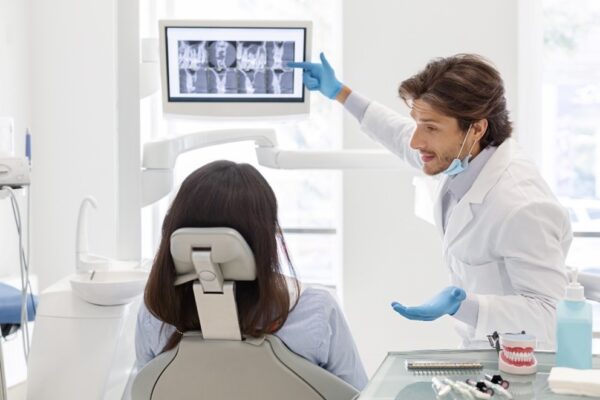Many fear that dental care only means one thing: pain.
With advancements in minimally invasive dentistry, patients may never hear the potentially fear-inducing sound of a dentist’s drill.
Dr. Pranathi Reddy reports that over the past two decades, dentists have increasingly offered the option of minimally invasive dental care to both treat current issues and help prevent more in the future. Modern technology has led to a breakthrough in the dental field, with many minimally invasive procedures becoming part of regular care.
That’s particularly important since about 80% of children and young adults are estimated to have at least one cavity before turning 17, according to the American Dental Hygienists’ Association.
With the help of minimally invasive dentistry procedures, that is also poised to become a thing of the past.
Microdentistry
Minimally invasive dentistry broadly covers several techniques designed to improve and conserve tooth structure and overall oral health. Also known as microdentistry, these techniques allow dentists to lessen the impact on the teeth when performing necessary procedures that previously meant removing parts of their structure.
Several of these procedures are also designed to reduce the chance dental repairs may need to be made in the future. In that sense, restoring of minerals to the teeth through remineralization with applications such as fluoride and utilizing sealants to protect the teeth from decay are considered within the realm of minimally invasive dentistry. But there are several other techniques that help dentists explore and evaluate potential oral issues when they are in the early stages.
Examples
Dentistry is often a balancing act. Many procedures must aggressively treat an oral health issue while still trying to preserve as much of a tooth’s structure in general.
Often, treatment begins with diagnostic technologies that provide a clear picture of a tooth’s condition. One example is the Canary System, a laser-based tool that showcases the crystalline structure of teeth for dentists to pinpoint different degrees of damage.
Another is the CariVu, a device that uses transillumination, live video, and photo-capturing to give the dentist and a patient a real-time look at the environment of the tooth structure, such as if decay is present and spreading.
To combat demineralization, and the loss of dentine and enamel, doctors may recommend a minimally invasive fluoride treatment. Dental sealants, the application of a plastic coating to morals and premolars, can go a long way to protect teeth from decay, as mentioned above.
There are now ways to remove decay without using a drill. Air abrasion uses high-velocity aluminum oxide particles to remove a concentrated amount of a tooth’s structure to eliminate decay. Air abrasion can also pinpoint caries and remove enamel stains before adding veneers.

The Benefits
In addition to being a strong preventive health measure, microdentistry frequently means quicker recovery times and requires fewer medications compared to traditional procedures.
Pain or discomfort is dramatically reduced and existing teeth experience very minimal damage. Minimally invasive dental procedures also lead to more precise procedures, lowering the risk of inaccuracy and treating just the part of the tooth that needs it.
And there’s another big bonus: Minimally invasive options are often far less expensive than traditional procedures.

